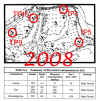| question to: | illustrations: | info: |
| Ceri Morris Question |

|
Overview and background information relating to the question: The planning department are attempting to cover up historical malpractice where they colluded with the Cuddy Group to hide contamination and a human health risk assessment in a series of planning applications between the period 2008 and 2010. This malpractice breached the 1990 Environmental Protection Act and the planning department are trying to hide this. Evidence was submitted to the Neath-Port Talbot Council Planning Committee and the Glynneath County Councillors Del Morgan and Simon Knoyle on 7/9/2020 in the below document and to date no counter evidence has been provided by the council to refute the allegation that the council colluded with the Cuddy Group Ltd to hide contamination at the Heol y Glyn development. CLICK HERE TO VIEW THE EGRAC 1990 ENVIRONMENTAL PROTECTION ACT BREACH REPORT CLICK HERE TO SEE THIS DOCUMENT AS A YOUTUBE VIDEO Subsequent to this document being submitted to the NPT Council planning committee a second member of our residents group died from an extremely rare neurodegenerative disorder PSP that has been linked to Arsenic. The residents lived 5 doors apart and at the closest proximity to the site. Our 1990 EPA breach document provides evidence that an above safe level of the contaminant Arsenic was found at the site and left un-remediated against the advice of the human health risk assessment submitted to NPTC. A second document was created on 1 May 2021 and submitted to Natural Resources Wales, Glynneath Town Council and Neath-Port Talbot Council that contained this information and reached the following conclusion: “Residents of Brynhyfryd are dying from the rare neurological disorder Progressive Supranuclear Palsy. These deaths are almost certainly due to specified and other probable unspecified contamination tipped at the Heol y Glyn landfill site. Public officers who have covered up this contamination are potentially responsible for the unlawful killing of these residents.” Document 1 provides the cause and Document 2 shows the effect. To date no counter evidence has been provided by the council in relation to either document to refute the allegation that public officers at Neath-Port Talbot Council are responsible for the deaths of Brynhyfryd residents. CLICK HERE TO VIEW THE EGRAC PSP REPORT CLICK TO SEE THIS DOCUMENT AS A YOUTUBE VIDEO Question to Ceri Morris: In an email dated 4/5 2020 you stated that: "Turning specifically to the issue of land contamination at the site and whether the Council has historically contravened the Environmental Protection Act 1990, I would advise that this legislation no longer applies when a site is going through the planning process; by definition therefore the Council has not at any point contravened its duties under this legislation, as it is not relevant once the planning process has commenced." Please can you supply evidence that the council followed the Contaminated Land Strategy process in relation to the contamination identified in the 2008 chemical testing and human health risk assessment at the Heol y Glyn landfill. The UK law the Environmental Protection Act required either testing the site further to establish whether or not the site was a special site or remediation of the land as suggested in the human health risk assessment and the council Contaminated Land Strategy? (End of question) The reason we ask this question is because: This statement by Ceri Morris is a deliberate misrepresentation of a UK Government law, his responsibilities include upholding this law within the county borough of Neath-Port Talbot. CLICK HERE FOR THE ORIGINAL DOCUMENT WRITTEN BY CERI MORRIS CLICK HERE FOR A YOUTUBE VIDEO THAT EXPLAINS THIS INCIDENT IN GREATER DETAIL Additional Notes 1: The Contaminated Land Officer identified that the testing in 2008 was inadequate during the planning committee meeting of 8/9/2020. Additional Notes 2: Failure to provide evidence of correct contaminated land protocol by the developer Cuddy Group Ltd. means that the council planning department worked together with the Cuddy Group Ltd to avoid the correct contaminated land protocol as required UK Government law, the 1990 Environmental Protection Act. |







